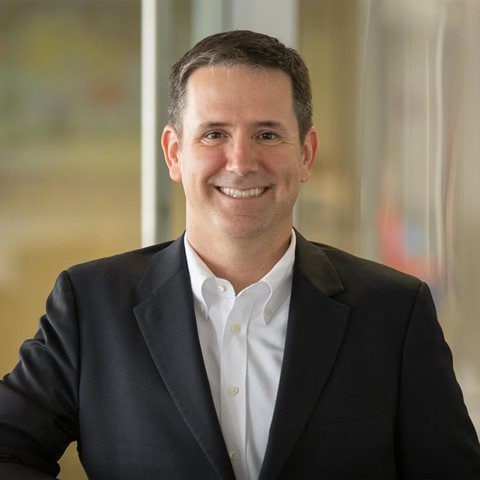Delivering performance feedback can already feel fraught. Now add in inflation, burnout, and a hot talent market that has workers quitting in droves. In this episode of McKinsey Talks Talent, talent experts Bryan Hancock and Bill Schaninger talk with McKinsey Global Publishing’s Lucia Rahilly about the talent trends that have managers on edge—and how to handle them.
McKinsey Talks Talent is hosted by Lucia Rahilly.
This transcript has been edited for clarity and length.
Quiet quitting, loud and clear
Lucia Rahilly: Today we’re talking about a few of the talent trends that have surfaced in the media headlines in recent months. Let’s start with “quiet quitting.” There has certainly been a lot of regular, “same-old” quitting going on, as we have covered heavily in our Great Attrition research. Bill, do you want to give us the quick and dirty on the persistence of “regular quitting” in today’s job market?
Bill Schaninger: Yes, people continue to quit. And in McKinsey’s most recent data, the number of people saying they would leave without a job in hand is still very high. The lower attrition numbers previously seen in sectors like healthcare or education are starting to creep up. Early on in the COVID-19 pandemic, we saw a massive hit to hospitality and leisure. This trend could probably be traced to what was and wasn’t available to us during the pandemic.
We’re also seeing an interesting phenomenon where people are being hired and not showing up. Not showing up mentally or emotionally is aligned with the idea of quiet quitting—the idea that people are doing the bare minimum. Even in an environment where all these people are choosing to quit, there remains an undercurrent of people who have emotionally—and in some cases, cognitively—disengaged but are still physically there, which arguably may be worse.
Lucia Rahilly: For folks of a certain Gen X sensibility, the phrase quiet quitting might feel “slacker-ish.” But in the media, some are calling it a healthy expression of the need to rebuild boundaries that collapsed during the pandemic. What’s your take, Bryan?
Bryan Hancock: Setting boundaries, in a healthy work environment, means being engaged and having the time and space to invest in work projects that energize you. The difference between setting boundaries, which can be quite healthy, and quiet quitting is that quiet quitting makes it seem like you don’t care if you get fired. You’re just going to sit in the seat for as long as it takes for somebody to figure out that you’re not adding value, and then for as long as it takes for HR to process you out.
There’s part of the quiet-quitting trend that leans on quitting. You aren’t looking for boundaries; you’re not engaged in work; it’s transactional. You’re thinking, “My boss doesn’t check in on me. HR takes six months to do a write-up. I bet I can stay in this gig for two years and not do much.” And employees are confident enough in the job market that when they do get fired, it’s not a black mark, or they can voluntarily leave ahead of time.
There is a small subset of people who are now trying to game the system because of a strong labor market. And that, to me, is a very different phenomenon than people who are engaged but respect boundaries.
How managers can help
Lucia Rahilly: So how can managers help their employees set healthy boundaries—especially during this talent shortage, when some employees may be tired of having to overcompensate for staff who have left?
Bryan Hancock: We are seeing close to 40 percent of the overall working population self-report being burned out. That’s definitely a big percentage of employees saying, “This is a bit much, and I need to do something different to make it work.”
What managers can do is start with a conversation—literally start with, “How are you doing?” and “What is it that excites you? How does what we’re doing link to your own sense of purpose, of what we’re trying to do together?” Really try to engage the team.
The role of the manager is key to helping workers align with purpose and with the practical day-to-day: “Looks like you have a bit too much going on. How can I help?” And then following up with ways to actually make a difference.
If managers aren’t there to help inspire, if managers aren’t there to help lead, if managers aren’t there to help follow up, it’s a logical extension that an employee might think, “Is anybody going to notice if I don’t do this for a week? Or two weeks? Or, wow, it was three months until somebody had the conversation with me.” At some level that’s quiet quitting, but at another level it’s just a failure of management.
Bill Schaninger: The nature of the work relationship, which is a relationship like any other, is that there’s a give and there’s a get. But the minute an employee perceives that the boss no longer cares about them as a person, or doesn’t care about what they’re working on, they begin to think, “Why should I care?”
If you’re going to trigger apathy, trigger indifference, trigger an attitude like, “I dare you to catch me,” it’s likely your employees have been massively underled. Because if they weren’t being underled, you’d have caught them much earlier. The price you pay for authority is that you have real responsibilities to other people.
Bryan Hancock: If you really try to dig into why people are quiet quitting, some of it is that they don’t feel a connection to their job, to what they’re doing, to the broader mission. And there’s a sense of loss because everybody at some point in their career takes a job because they aspire to be bigger. They dream of something more inspiring, more captivating. And when they get to a point where that dream is gone, they check out. And then the question becomes how to reignite that spark—that sense of mission and that alignment. If quiet quitting is actually a broad phenomenon, then a lot of people have a real sense of loss for a pretty big part of their work life.
Subscribe to the McKinsey Talks Talent podcast
Lucia Rahilly: Gallup published some data showing that employee engagement is falling specifically among younger workers, Gen Zs and millennials under 35. Have we learned anything from our life-stage research about these younger demographics? What they might want in terms of purpose from their jobs? And what might be lacking?
Bryan Hancock: One of the things we’ve seen is that younger generations are much more likely to be in what we would call the “idealist” segment—the segment truly looking for their calling. They’re leaning into that. They’re willing to take less compensation, to work longer hours, for a job they believe in and are growing in.
So there’s a set of folks asking, “Hey, what is my calling? Where is it? How can I grow?” And they’re disproportionately in the under 24-year-old segment.
Bill Schaninger: The research on individual purpose we did 18 months ago revealed this difference between the idealist and the pragmatist. It’s pretty telling. When we asked younger workers, “Does your work have to have purpose?” the answer was a resounding “Yes”—an off-the-charts “Yes, it has to make a difference.”
But their ability to describe the difference they want to make was really limited. It was broad strokes: “I need to make the world better.” “I want to improve access to healthcare.” “I want to improve the quality of schools.” But when you asked, “Well, what would that look like if you were there?” They’d say, “Well, that’s your job. It’s your job to help me figure that out.” And then the minute they had a major life event, like a long-term relationship or having a child, they’d reel back on the grandiosity of the purpose, and get way more specific.
Building ties that bind
Lucia Rahilly: Are your clients talking about quiet quitting?
Bill Schaninger: From clients, I haven’t heard much about quiet quitting specifically, but I’ve not had a time in my professional career at McKinsey, which is a little over 22 years, where we haven’t thought about “social loafing.” In other words, people figure out, particularly if they were on a recently high-performing team, that they can skate. And then the same people always get leaned on. That’s been a phenomenon forever. There’s a good amount of research on what happens to team morale when social loafing goes unchecked.
We’ve had a perfect storm: the COVID-19 pandemic, working from home, bosses not checking in as much, feeling disengaged. The more you’re away from your peers, the easier it becomes not to do your part.
Lucia Rahilly: What about engagement? Are you seeing clients do anything interesting to try to increase engagement, particularly in a hybrid context?
Bill Schaninger: We’re thirsty for interaction with others. We’re not meant to be isolated. Organizations should think of getting together in person as a dimmer switch, not an on/off switch. For some reason, we’ve seen a lot of “fully in” or “fully out.” But prepandemic it wasn’t that way. I think it’s really come at the cost of social capital, ties that bind, a feeling of belonging. And I think now we might have to overinvest in bringing people back, not just to work but rather to remind ourselves that we like the people we work with.
We’re thirsty for interaction with others. We’re not meant to be isolated. Organizations should think of getting together in person as a dimmer switch, not an on/off switch.
Bryan Hancock: It’s a society-wide problem, too. Look at the amount of research on loneliness. For example, the number of men who have a guy who could pick them up after a colonoscopy—it’s incredibly low. Loneliness is in some ways so pervasive. It’s pervasive on college campuses, among people just joining the workforce, among people who are more tenured.
A lot of folks created their community through work. And we’re seeing a disruption of that, across age cohorts and seniority levels. There’s a desire to connect, to engage—but also to do so in a way that feels authentic. People are trying different ways of making it work, but I think we’re pretty far from having a good solution.
Lucia Rahilly: Let’s talk more specifically about the social-capital research, which dovetails with this notion of quiet quitting. What has happened to social capital over the course of the pandemic?
Bryan Hancock: What’s interesting in the social-capital research is that, across all demographic types, people say they have fewer connections now than prepandemic. But the biggest decrease in social capital tended to happen among women and people in diverse groups. We need to really think about why—when we have entire departments focused on diversity, equity, and inclusion—we’re seeing these social-capital results that are quite stunning.
Lucia Rahilly: We’ve spoken enough, on this podcast and elsewhere, for me to know that neither of you thinks returning to the office full-time is the answer to reaccumulating social capital. So what else can clients do? Have you seen clients take any interesting approaches to facilitate rebuilding social capital in the hybrid context?
Bryan Hancock: One thing I saw a global investment organization do was to recognize that knowledge sharing across different silos is important. Leadership noticed the workers didn’t share knowledge by uploading it to a central digitized system. Instead, they had verbal conversations to work issues out.
To improve connections between discrete teams, they created a training program to enable colleagues to talk to one another, build deeper connectivity, and do something fun together under the auspice of getting work done. They recognized that if the training were built as a social event only, people wouldn’t come.
Bill Schaninger: We need to reinvigorate the idea, “Other people can help me do my job” versus “I alone do my job.” Everything has to come with a dose of community building.
When performance feedback feels fraught
Lucia Rahilly: Do you expect the rise of quitting, and the lowering of barriers to job switching or taking time off, to affect year-end reviews? How should managers be thinking about year-end evaluation and feedback, when shortages are growing and the threat of churn is looming?
Bryan Hancock: It makes it harder for managers to give tough feedback, which is ultimately what helps individuals grow and organizations advance to a better place. And we know from McKinsey’s research on feedback that if you don’t deliver tough feedback, if you just let people skate by—that has a demotivating effect for strong performers and team players.
A healthy conversation looks like, “You’re doing great on these two things, and you need to improve on these four things.” Unfortunately, people haven’t been trained to have that healthy conversation. And they’re scared to have a conversation that may be more direct and affect compensation. So they soft-pedal it and end up not having a conversation that needs to be had.
Bill Schaninger: You won’t have the difficult conversation because the thought of losing another employee is devastating. Several years ago, we started tracking leaders who said they were eliminating year-end reviews. They’ve all come back with some form of administrative evaluation because they’ve realized they can’t differentiate quality of work from year to year.
We haven’t cracked the nut on how to stop focusing on the year-end review “season,” on the “event,” and focusing throughout the year on having good performance coaching conversations. In that case, for the vast majority of people, the year-end review would be almost a nonevent—a summation of what you’ve talked about throughout the year.
I do worry that, as we become more fractured and more fragmented, we’re still in the world of the season, where the leader has only been trained on filling out the form, versus actually talking about meaningful performance coaching.

McKinsey Talks Talent Podcast
Lucia Rahilly: Is it possible that giving feedback via technology, and not in a face-to-face way, could enable more frequent, more direct feedback? It might not be as terrifying as sitting across from someone face-to-face and saying, “You really fell short on this one.”
Bryan Hancock: For a small subset of technical skills and tasks, where what you’re getting feedback on is how many lines of code had bugs in it—that can be automated and can be given more frequently. It’s level setting and gives you a sense of where to go. But social-emotional feedback can’t be given in an automated way. That has to be a direct conversation. And those conversations are the hard ones. Those are the ones where you have to recognize where the person is coming from; you have to be centered so you don’t put blame on the other person. Those conversations are more complex.
Some people are born gifted in having those conversations, and some aren’t. But every manager needs to be able to have conversations that help put on the table some of the social and emotional issues going on in the workplace and be able to coach somebody through them.
Every manager needs to be able to have conversations that help put on the table some of the social and emotional issues going on in the workplace and be able to coach somebody through them.
Bill Schaninger: I participated in a demo of an AR/VR [augmented reality/virtual reality] experience for having difficult conversations about ten days ago. It was fascinating.
Lucia Rahilly: That is so interesting.
Bill Schaninger: It wasn’t just an avatar. There was a person controlling the avatar, and they were speaking; there was a blending of the person’s lips for the mouth movement of the avatar. Within about 30 seconds you were responding to the avatar as if it were real. The person who’s speaking gives some scenarios to which you respond.
So it’s clearly practice, and it doesn’t feel as charged. You probably get closer to the clean read on what someone’s instincts would be, as opposed to saying, “Oh, I need to be protective here, or on guard.” I found it remarkable in its efficacy.
Early on I thought, “Well, this is hokey.” But about 45 seconds into it I thought, “Oh, this is legit.”
Bryan Hancock: That’s super fascinating.
Bill Schaninger: Many people are scared of receiving any feedback other than “You’re so special, and it went swimmingly well.” So you also have to practice receiving feedback that gives you an opportunity to grow.
Comp and the inflation factor
Lucia Rahilly: We spoke on The McKinsey Podcast about year-end reviews and the importance of them being conducted fairly and transparently. Anything substantive to add since that episode aired?
Bryan Hancock: Some jobs require interdependencies—how you’re working across teams and connecting with the sales group, the innovation group, the finance group. For those roles, it’s hard to figure out how to measure what “good” looks like. So there’s a potential trap where you risk rewarding the people you see the most, talk to the most, over the ones who are independent.
And we know the people coming back most to the office tend to be male, tend to be less diverse. If you’re inadvertently rewarding the people who are showing up, you’re also inadvertently not recognizing some more diverse folks who, for a variety of reasons, are more remote than in-person.
So for those interdependent roles, you should give very specific, actionable feedback. Wipe away some of the general impressions like, “Hey, this person looks like a team player.” Instead, focus on more measurable data like specific behaviors. You have to be really disciplined as you’re going through the review process.
Having remote workers means you’ve got to work a whole lot harder to get the specific points of reference to make the feedback useful. So it wouldn’t surprise me if somebody who doesn’t have enough employees and is having a hard time just getting the core work done—if that person is emotionally drained and may just mail it in.
The other thing that I’ve been thinking about is how many companies tie compensation to review season. And, right now, a lot of compensation has been changing. You’ve got overall wage inflation. You’ve got a decline in wage premiums for markets like New York and San Francisco—places where you’ve typically needed to pay more because the cost of living is more. And you’re seeing increasing nationalization of wages because you can work remotely for many knowledge-worker jobs.
A lot of compensation is in flux. And if you put that in the context of a performance review, which some are attempting to do, it could have a potentially devastating effect on morale.
What I’ve been encouraging my clients to do is think about feedback and compensation as two separate pieces. Think about the feedback you want to give. And think about what it takes to really recognize people at the very top and the very bottom. Then, separately, think about what pay means in the context of wage inflation and the nationalization of wages.
Because if you try to mix them together, then you can end up with somebody feeling like, “Hey, that feedback was unfair, and this comp is really unfair.” And we know that if somebody perceives comp to be unfair, it is a significant demotivator that sticks with people for much longer than if they just thought the feedback was unfair.
Bill Schaninger: Welcome to the impetus for quiet quitting.
Lucia Rahilly: Bill, anything to add there? How do you expect inflation to affect thinking about year-end comp?
Bill Schaninger: People sometimes want to avoid talking about how inflation affects comp. Sometimes this specter of, “Well, we had to keep comp quiet” guides behavior. I would go the exact opposite right now. I would want to be loud and proud in saying, “Let’s talk about comp. Let’s talk about how we’re acknowledging inflationary pressures, talk about understanding the market as a commitment to you, the employee.”
I’m not detecting a ton of that transparency. When the collective is involved, I think we should be super transparent. And for an individual performance kicker, we should break up the appraisal into parts and be clear about how comp does and doesn’t connect: “This was market-driven. This is about the company. This is about you.” Really tease it out so people can see where they have a lever and where they don’t. Very few are being transparent about “the why” behind compensation. They aren’t breaking compensation into these component pieces: market adjustment, company performance, and individual performance.
Also, it used to be that performance chats were an annual exercise at best. But the market dynamism that we’ve seen in the past two years suggests that it’s a good idea to give formal feedback more regularly—quarterly, maybe even monthly for some roles that are really in demand—and to break it down into the components I mentioned.
Lucia Rahilly: Great discussion. Thanks so much.
Bill Schaninger: It’s always great to be here. I’m so happy we’re in person.
Bryan Hancock: Great to be here.



